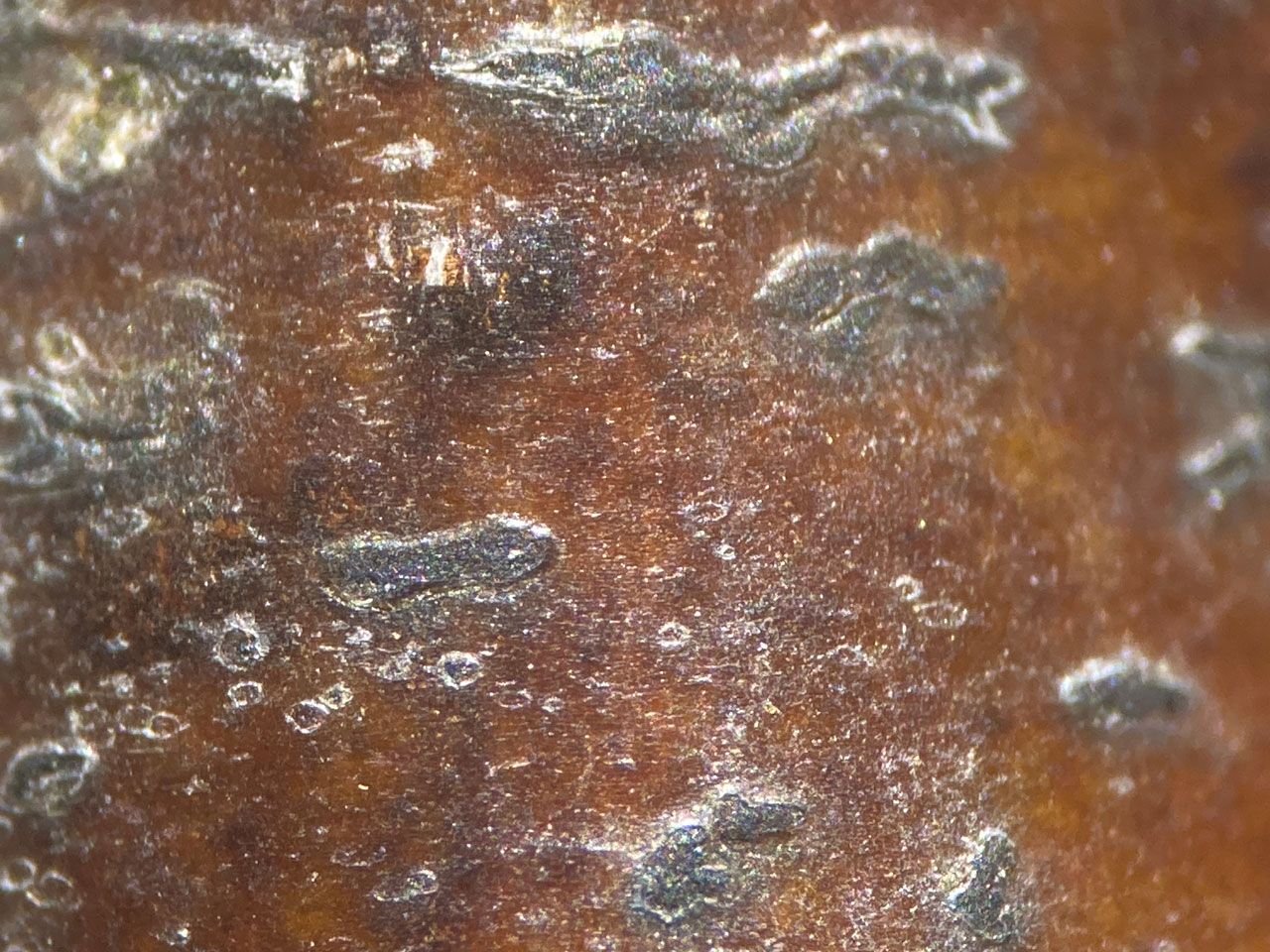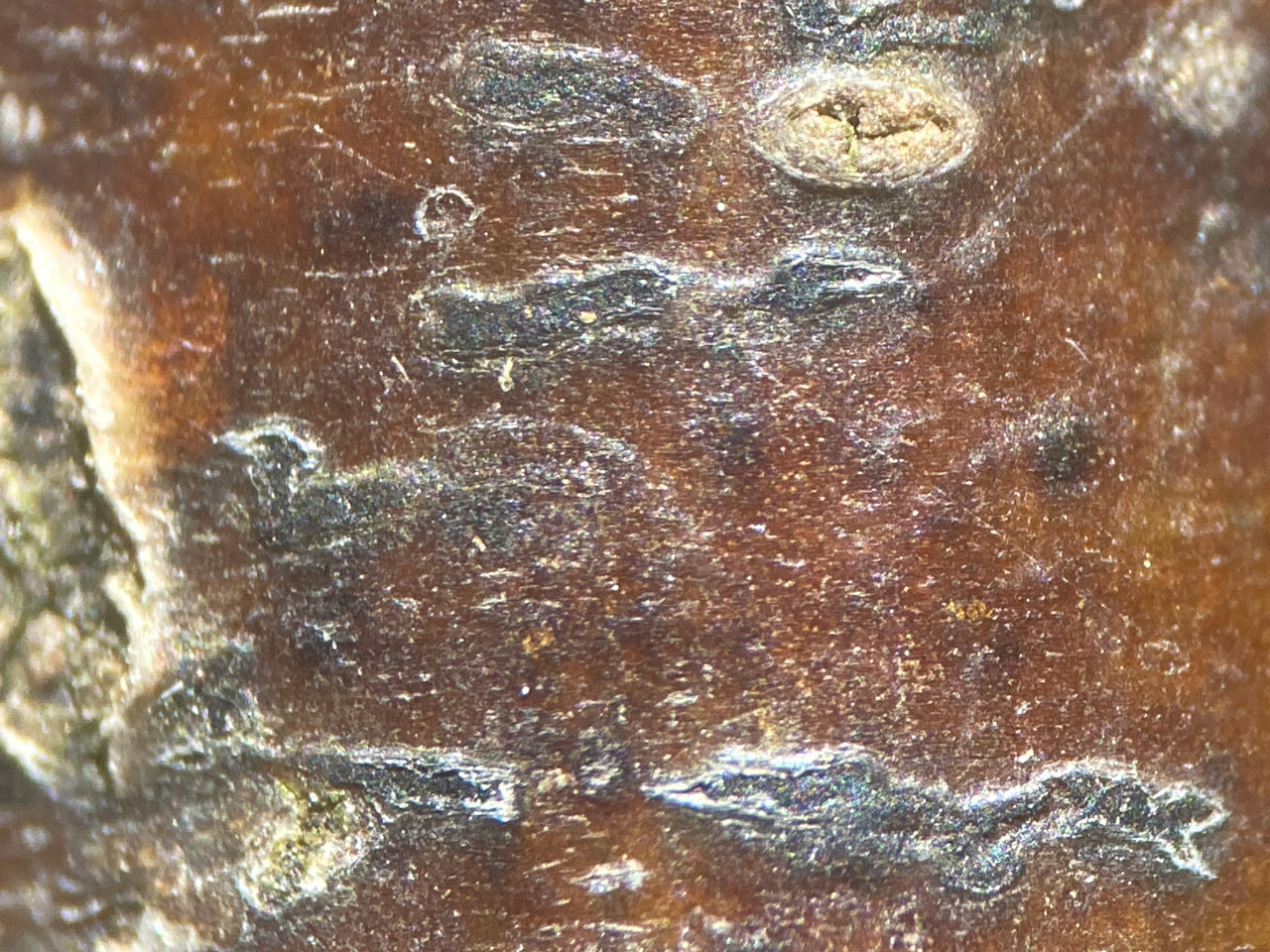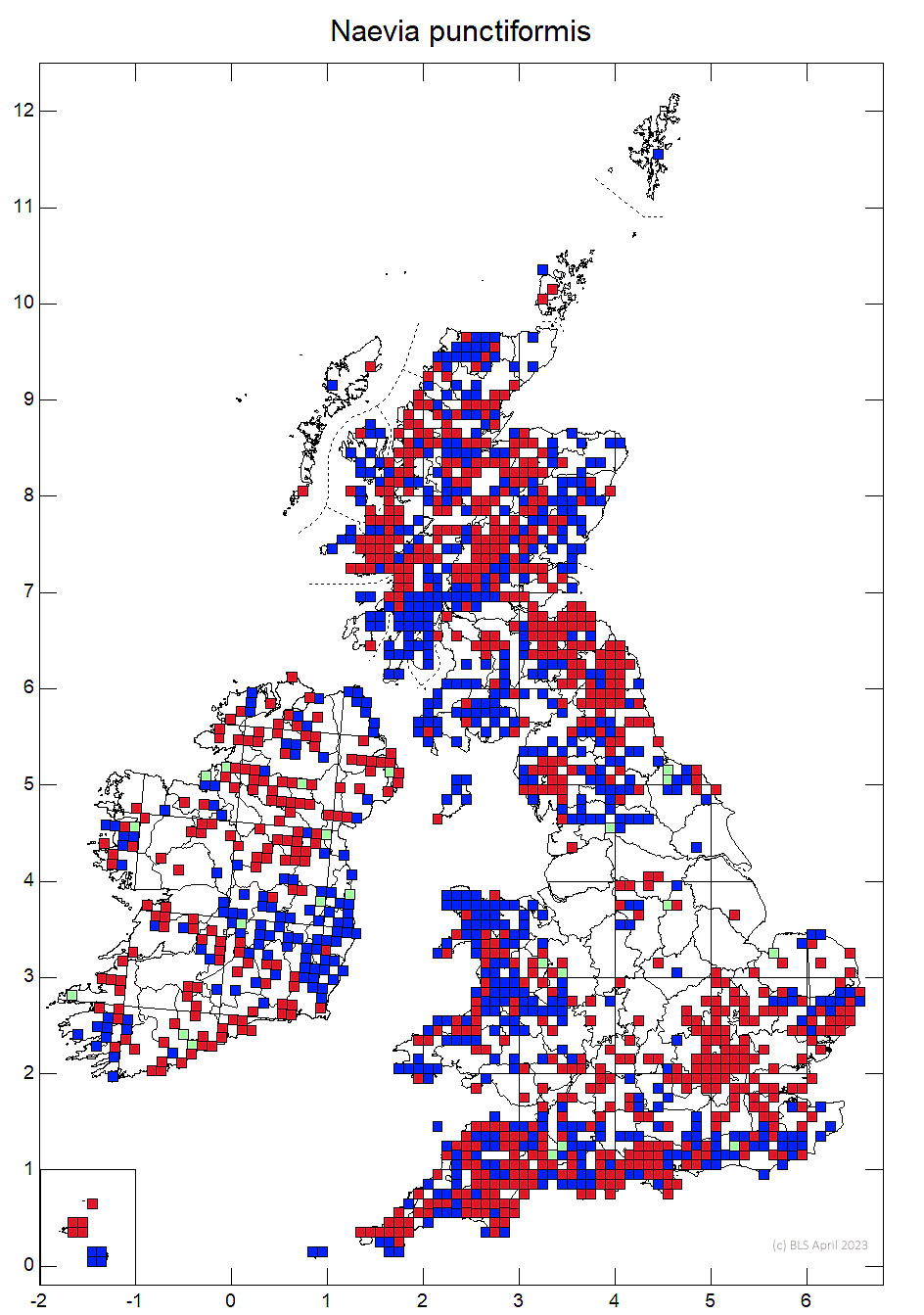A non lichenised fungus which grows with lichens in pioneer communities on smooth bark. The thallus is usually inapparent and is not lichenised, but the rounded to linear and black apothecia are distinctive; erumpent and often with a thin ‘margin’ of bark tissue. Arthonia radiata is distinct in its lichenised thallus. The rare oceanic fungi Arthothelium lirellans and Arthonia excipienda look similar in the field but have different spores.
Thallus immersed, usually effuse, indistinct or slightly ‘bleaching’ the bark; photobiont absent. Apothecia 0.2–1.4 × 0.1–0.4 mm, rounded or elliptical to linear, rarely branched or substellate, black, not pruinose, usually immersed then erumpent and often with a thin ‘margin’ of bark tissue; in section 40–60 μm tall; epithecium brown or olive-brown, K+ pale green; hymenium 26–50 μm tall, colourless; hypothecium indistinct, to 10 μm thick, colourless; paraphysoids 1–1.5 μm diam., numerous, apices thickened to 3.5 μm diam. with dark brown walls. Ascospores 13–23 × (4–) 5–7 μm, 3(–5)-septate, cylindric-obovoid to cylindrical; the apical cell not enlarged, colourless. Pycnidia not found. Lichen products not detected by TLC.
A species complex according to Moen (2019), who detected four separate taxa in material from Norway. More work is needed to understand this aggregate, and to find names for the clades.
Distinguished from Arthonia radiata by the less conspicuous, non-lichenized thallus, and rarely branched, shallower apothecia. Arthothelium lirellans and Arthonia excipienda look similar in the field but have different spores; muriform and one septate respectively.
On smooth bark of a wide variety of trees and shrubs; often a primary colonizer of twigs along with Arthopyrenia punctiformis; common except in heavily air-polluted areas.

Throughout Britain and Ireland, having widely recolonised formerly polluted areas.
Cannon, P., Ertz, D., Frisch, A., Aptroot, A., Chambers, S., Coppins, B. J., Sanderson, N. A., Simkin, J. & Wolseley, P. (2020) Revisions of British and Irish Lichens Volume 1 August 2020 Arthoniales: Arthoniaceae. Link.
Text by Neil A Sanderson, based on Cannon et al (2020)


